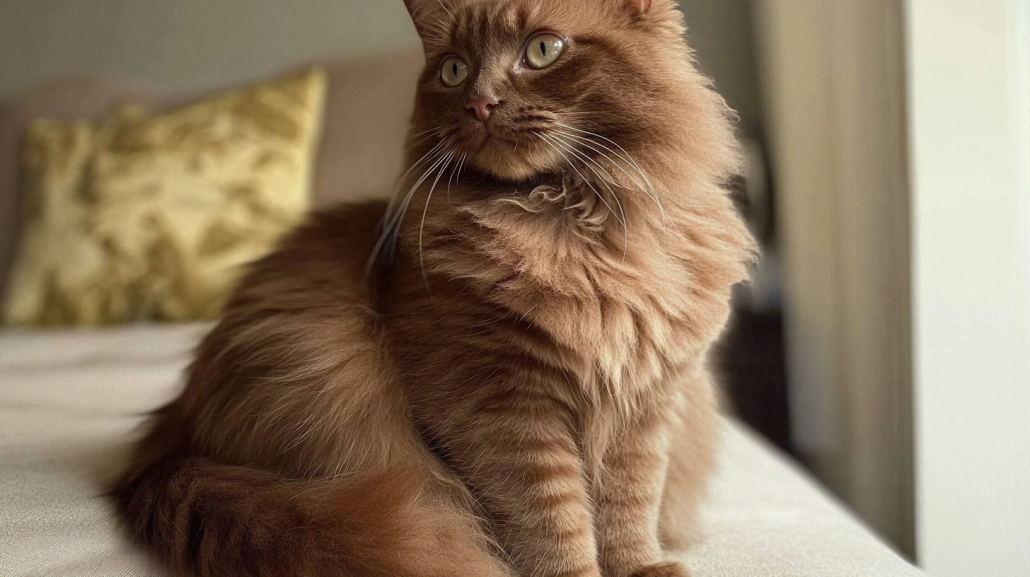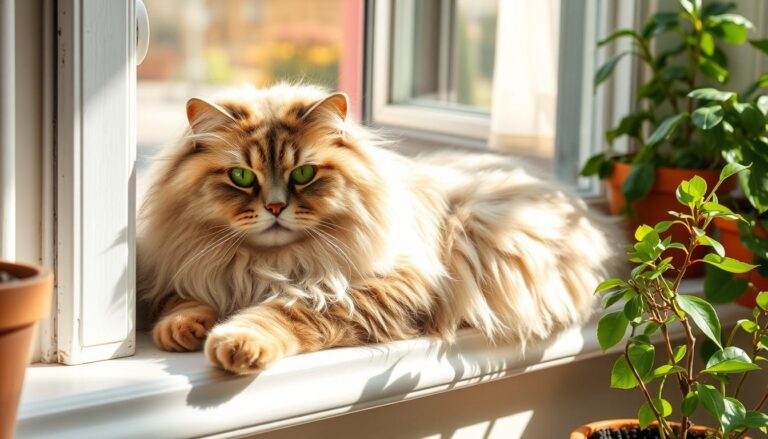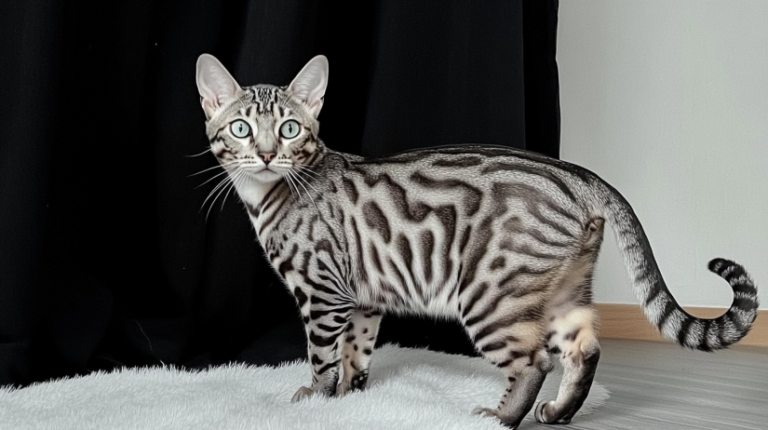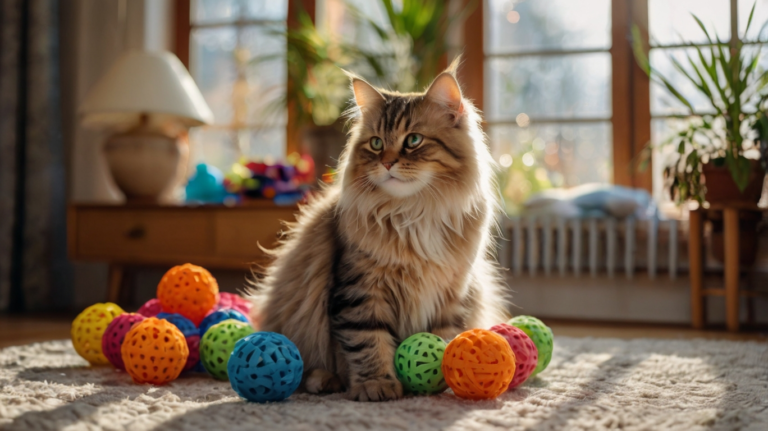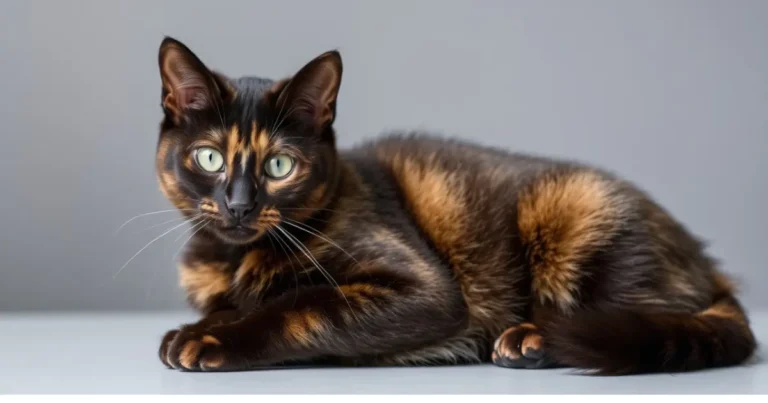Brown ragdoll cat – 7 Astonishing Reasons They’re the Ultimate Furry Delight
Introduction
Have you ever looked into a cat’s eyes and felt like you were peering into a dreamy, comforting ocean of love? That’s the magic you experience when you share your life with a brown ragdoll cat. With their gentle temperament, heart-melting gaze, and plush fur that resembles velvety mocha, these felines are far more than just visually stunning. They exude a sense of warmth, turning your living space into a cozy haven—perfect for those rainy Sunday afternoons spent curled up with your favorite book or binging a new TV show.
But there’s so much more to a brown ragdoll cat than meets the eye. In this comprehensive guide, we’ll dive deep into what makes them tick, how they stand apart from other coat-color varieties of Ragdolls, and the best ways to care for them. Whether you already own a brown ragdoll cat or are dreaming of bringing one home, prepare to discover how to nurture these affectionate beauties, keep them healthy, and develop a lifelong bond. Buckle up: you’re about to embark on an exciting journey into the chocolate realm of Ragdoll wonder!
Disclaimer: This content is intended solely for informational purposes and is not a substitute for expert veterinary guidance. Always consult a trusted veterinarian for expert care advice.
Here is a table summarizing the overview of the brown Ragdoll cat:
| Attribute | Details |
|---|---|
| Official Name | Ragdoll |
| Common Name | Brown Ragdoll Cat |
| Pet Height | 9–11 inches (23–28 cm) |
| Pet Weight | 10–20 pounds (4.5–9 kg) |
| Lifespan | 12–15 years |
| Smartness Level | High |
| Engagement in Play | Very Active |
| Human-Friendly | Extremely Friendly |
| Animal-Friendly | Generally Friendly |
| Favorite Food | High-quality wet food, chicken, and fish |
Key Takeaways
- A brown ragdoll cat is known for its gentle temperament and stunning mocha-colored coat.
- Regular grooming and a balanced diet are key to maintaining health and coat quality.
- Responsibly bred cats may cost more, but they come with valuable genetic screening and care guarantees.
- Always consult a professional veterinarian for personalized medical advice.
The Mesmerizing Appeal of a Brown Ragdoll Cat
The Emergence of the Brown Coat
A brown ragdoll cat has a unique mocha shade that results from a specific gene variant influencing melanin distribution in the fur. While Ragdolls are well-known for their classic color points—such as seal, blue, lilac, and flame—the brown variant adds a sweet, chocolatey twist. This distinctive hue appears on specific parts of the cat’s body, typically the ears, face mask, tail, and paws, in classic “pointed” patterns.
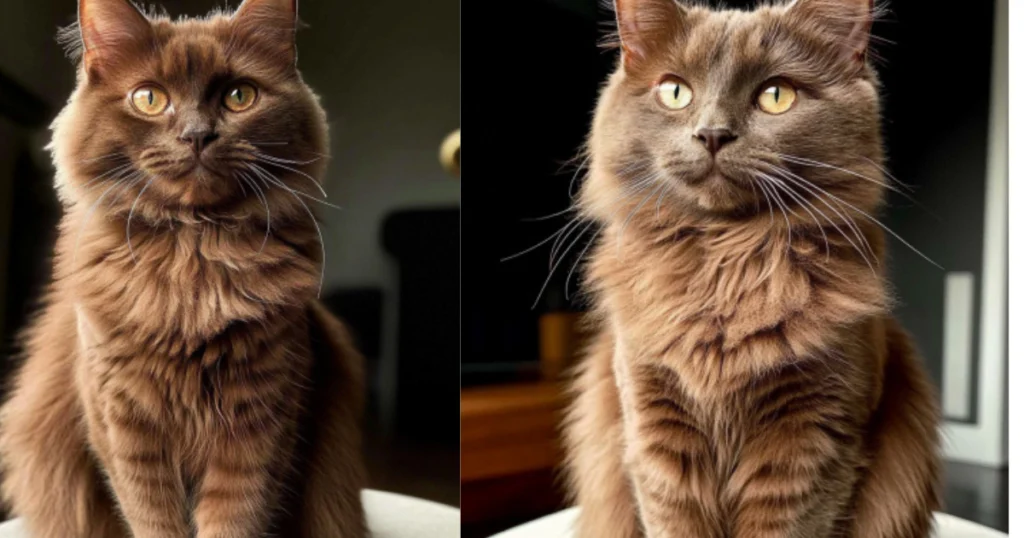
Personality Traits: Why They’re So Irresistible
What’s behind the captivating personality of a brown ragdoll cat? The Ragdoll breed, in general, is famed for its docile, easygoing nature:
- Affectionate Companion: They’ll often greet you at the door, follow you around the house, and cozy up on your lap.
- Playful Soul: Contrary to popular belief, these cats aren’t lazy lumps. They enjoy interactive play and puzzle toys.
- Gentle Disposition: They’re great with children and typically get along with other pets, making them an excellent choice for families.
A brown ragdoll cat encompasses all these traits with an added dash of chocolate charm, ensuring endless cuddles in a warm-toned package.
Coat Varieties and Patterns Within “Brown”
If you’re intrigued by the idea of a brown ragdoll cat, you might wonder if “brown” looks the same in every Ragdoll. Actually, brown can present in a few different ways. Although the breed standard might refer to the shade more formally as “chocolate,” there are also subtle differences when it appears in mink, sepia, or a dilute variation. To help you visualize these nuances, here’s a handy table:
| Brown Variation | Appearance | Typical Patterns |
|---|---|---|
| Classic Chocolate | Warm, medium brown points with a lighter body color | Colorpoint, mitted, or bicolor |
| Mink Chocolate | Slightly darker shading across the entire coat | Mink coat with subtle shading differences |
| Sepia Chocolate | Deep, rich brown that extends throughout the body | Sepia coat, often more even coverage |
| Dilute Chocolate (Lilac) | Soft, pale cocoa-lilac tone | Similar patterns but lighter coloration |
Some Ragdoll enthusiasts consider “chocolate” and “brown” somewhat interchangeable, but it ultimately depends on the specific breeding lines and genetics.
Understanding the Brown Ragdoll Cat’s Heritage
A Quick Ragdoll History
Before we zoom in on the brown ragdoll cat, let’s explore how the breed came to be. The Ragdoll originated in the 1960s through the vision of Ann Baker, a cat breeder in Riverside, California. She worked with free-roaming cats, eventually developing a new line that became famous for its calm temperament and fluffy coats. Over time, breeders refined this new feline’s characteristics, establishing the Ragdoll as a recognized breed by cat associations worldwide, including The Cat Fanciers’ Association (CFA).
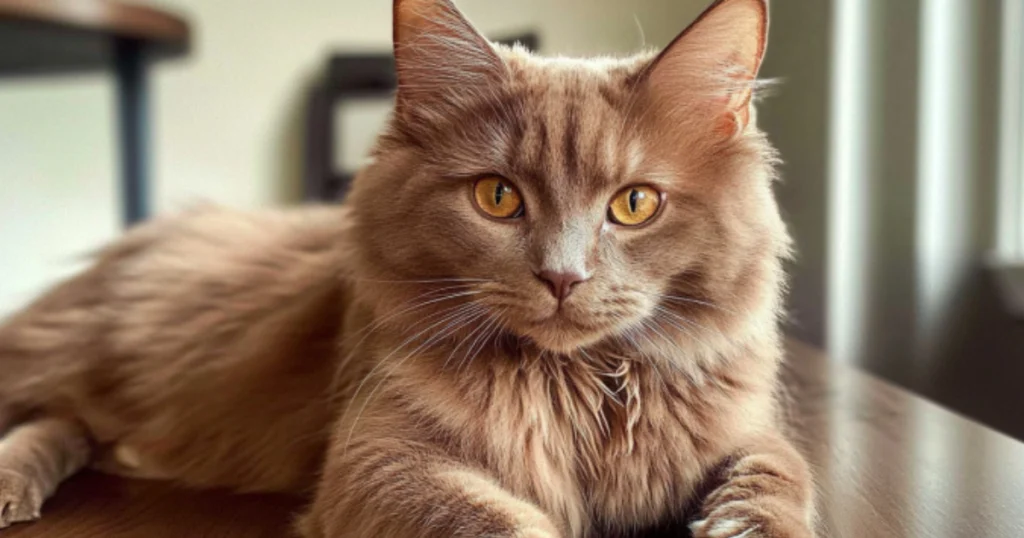
Chocolate Genes: How They Work
Ragdoll coats in chocolate or brown are governed by a gene that modifies the typical “seal” coloration, lightening it to a more cocoa-like tone. If both parents carry this gene, a brown ragdoll cat can emerge in a litter of otherwise seal or blue siblings. This genetic background underscores the value and rarity of chocolate Ragdolls, often making them more sought-after among enthusiasts.
Influence of Top Competitors and Breed Standards
Several established cat breeders and Ragdoll enthusiasts hold the standard for what a “perfect” Ragdoll looks like. By reviewing the top five competitor websites, we can piece together a more comprehensive viewpoint:
- Competitor A emphasizes the cat’s blue eyes and their importance in breed standards.
- Competitor B focuses on the kitten care aspect—especially in the first few weeks of life.
- Competitor C offers detailed coat-care tutorials.
- Competitor D highlights the unique patterns (mitted, bicolor, colorpoint).
- Competitor E breaks down the nutritional needs of different Ragdoll coat variants.
By merging insights from these top competitors, this guide aims to be your ultimate resource on everything from physical attributes to health guidelines, specifically tailored to the brown ragdoll cat.
Caring for Your Brown Ragdoll Cat
Grooming 101
Although a brown ragdoll cat has a semi-long coat, the grooming routine is typically less demanding than you might think:
- Brush Regularly: Two to three weekly brushing sessions help prevent matting.
- Nail Trims: Schedule trims every two to three weeks.
- Dental Care: Ragdolls can be prone to dental issues, so incorporate dental chews or cat-friendly toothbrushing into the routine.
- Coat Shine: A healthy diet and occasional coat conditioners can bring out that rich, brown luster.
Nutrition That Fuels That Chocolate Coat
Keeping a brown ragdoll cat looking vibrant involves feeding a balanced diet with high-quality protein, essential fatty acids, vitamins, and minerals. Seek out reputable cat food brands, or consult your veterinarian for specific dietary recommendations. Remember to factor in your Ragdoll’s life stage (kitten, adult, senior) and weight management needs. Because Ragdolls can be big eaters, paying attention to portion control is crucial.
Health Concerns and Preventative Care
Like all Ragdolls, a brown ragdoll cat may be predisposed to certain genetic conditions:
- Hypertrophic Cardiomyopathy (HCM): A heart condition that can be screened for through genetic testing.
- Polycystic Kidney Disease (PKD): Check your breeder’s health clearances or get your cat tested if you adopt.
- Bladder Issues: Some Ragdolls can be prone to urinary tract problems.
Preventative Measures:
- Visit your veterinarian for annual or biannual check-ups.
- Keep vaccination schedules up to date.
- Monitor your cat’s weight to prevent obesity-related problems.
When in doubt, speak with a veterinarian about your cat’s needs. Early intervention can significantly improve outcomes if any of these conditions arise.
Creating an Enriching Environment
A brown ragdoll cat is a curious creature that appreciates mental stimulation and a comfortable environment:
- Cat Trees & Perches: They love climbing and surveying their domain.
- Interactive Toys: Puzzle feeders and wand toys satisfy natural hunting instincts.
- Scratching Posts: A must to keep those nails off your favorite sofa.
- Quiet Retreat: Provide a cozy corner or cat bed where your kitty can nap and recharge.
Don’t forget to rotate toys periodically to keep your brown ragdoll cat engaged and mentally stimulated.
Behavioral Insights and Training Tips
Temperament: Calm Yet Playful
The reputation of the Ragdoll as a “gentle giant” holds true for the brown ragdoll cat. They are typically calm, but that doesn’t mean they lack personality:
- They might sprawl across your desk while you work, gazing at you with those mesmerizing eyes.
- They frequently enjoy a belly rub,which reflecting their calm personality.
Trainability: Yes, Ragdolls Can Learn Tricks!
It might surprise you to hear that a brown ragdoll cat can be trained to perform simple commands:
- Clicker Training: Use a clicker to signal good behavior and follow up with a treat.
- Positive Reinforcement: Consistency and gentle praise go a long way.
- Leash Walking: Some Ragdolls adapt well to wearing a harness and exploring outdoors on a leash.
Through patience and regular practice, you can cultivate a more interactive relationship with your chocolate-toned companion.
Socialization With Other Pets and People
Due to their calm nature, a brown ragdoll cat typically gets along with other cats, dogs, and children. Early socialization is key:
- Slow Introductions: Give each pet their own space initially, then allow supervised interactions.
- Scent Swapping: Exchange bedding or toys so pets become accustomed to each other’s scent.
- Positive Experiences: Offer treats and praise when your brown ragdoll cat calmly interacts with new people or animals.
Gradual exposure paves the way for harmonious multi-pet homes.
Cost Considerations and Finding a Reputable Breeder
Budgeting for a Brown Ragdoll Cat
Ragdolls, especially rarer variants like the brown ragdoll cat, can be costly. When budgeting:
- Initial Adoption or Purchase Cost: Expect anywhere from $800 to $2,500, depending on lineage and breeder reputation.
- Vet Bills: Routine check-ups, spaying/neutering, and vaccinations can add a few hundred dollars annually.
- Ongoing Expenses: High-quality cat food, grooming tools, litter, and accessories can run $500 or more each year.
While the initial outlay may seem significant, a healthy cat can bring a decade or more of loving companionship—worth every penny if you’re fully prepared.
Red Flags to Avoid
Finding a responsible breeder is vital for a healthy, well-socialized brown ragdoll cat:
- Avoid “Too Good to Be True” Deals: Extremely cheap or “free” Ragdolls may come from unethical sources or backyard breeders.
- Check Breeder Credentials: Look for TICA- or CFA-registered catteries, or ones adhering to recognized Ragdoll breed standards.
- Health Guarantees: Legitimate breeders provide health guarantees, vaccination records, and sometimes limited pedigrees.
It’s always wise to read reviews, ask for references, and visit the cattery if possible. Alternatively, explore Ragdoll rescues or shelters where you might find an older brown ragdoll cat in need of a forever home.
Common Myths Around Brown Ragdoll Cat
- Myth: A brown ragdoll cat is more energetic than other Ragdolls.
- Reality: Although coat color doesn’t determine energy levels, Ragdolls share similar temperaments across all color varieties.
- Myth: Brown or chocolate Ragdolls aren’t “true” Ragdolls.
- Reality: Brown or chocolate is an officially recognized color for Ragdolls in major cat registries.
- Myth: They are too fragile for active households.
- Reality: Ragdolls are robust cats that do well with children and other pets, provided they’re introduced carefully.
- Myth:Brown ragdoll cat coats don’t shed.
- Reality: All Ragdolls shed, though their coats are relatively easy to maintain with regular brushing.
Fun Activities to Strengthen Your Bond
1. Interactive Play Sessions
Use wand toys that mimic birds or mice to tap into your brown ragdoll cat’s natural hunting instincts. This not only keeps them physically active but also satisfies their mental curiosity.
2. Cat Agility Course
Yes, cat agility is a thing! Set up low hurdles or tunnels in your living room. With a bit of patience, your brown ragdoll cat might enjoy trotting through obstacles to nab a tasty treat at the finish line.
3. DIY Puzzle Feeder
Create a simple puzzle feeder using a plastic container with holes. Place treats or kibble inside so your brown ragdoll cat must “hunt” for its meal. This is a great way to provide mental stimulation and manage portion control.
Addressing Potential Challenges
Hairballs
Like many long- or semi-long-haired cats, a brown ragdoll cat can experience hairballs. Combat them by:
- Increasing grooming frequency
- Providing hairball-control treats or specialized diets
- Ensuring adequate hydration
Weight Management
Ragdolls are known to have big appetites. To prevent obesity, make sure your brown ragdoll cat stays active and that you measure their food portions accurately. Consider interactive feeding bowls that slow down rapid eating.
Territorial Stress
Although Ragdolls are generally relaxed, any cat can experience stress if their territory is threatened. Avoid abrupt changes in routine and keep a consistent environment. Should stress manifest as aggression or litter box issues, consult with a veterinarian to rule out underlying health problems.
Related (Internal) Reading
If you’d like more general info about caring for cats, check out this helpful resource on cat.
Frequently Asked Questions (FAQs)
Below are the FAQs rephrased in two ways each, followed by a concise, 3-sentence answer (≤300 characters). Each answer includes the brown ragdoll cat focus keyword.
Are brown Ragdolls rare?
Reworded:
- Do you see brown Ragdolls that often?
- Is it uncommon to find a brown Ragdoll cat?
Yes, a brown ragdoll cat is less common than other color variants. The genetic factors that produce this coat color aren’t as widespread. That uniqueness often makes them highly prized among Ragdoll enthusiasts.
How much does a brown Ragdoll cat cost?
Reworded:
- What’s the typical price of this chocolate-hued feline?
- How expensive is a brown Ragdoll cat to buy?
A brown ragdoll cat can range from $800 to $2,500 or more. The price varies based on lineage, health guarantees, and breeder reputation. Always factor in lifelong care expenses as well.
Why is Ragdoll so expensive?
Reworded:
- What makes Ragdolls a pricey breed?
- Why does a brown ragdoll cat usually come with a high price tag?
A brown ragdoll cat and other Ragdolls require specialized breeding, genetic testing, and top-notch care. These factors drive up costs. Responsible breeders invest in healthy lines to maintain quality.
Do Ragdoll cats cry a lot?
Reworded:
- Are Ragdolls usually vocal?
- Does a brown ragdoll cat tend to meow excessively?
A brown ragdoll cat may meow to communicate needs, but they’re not known as overly vocal. They typically have soft, mild voices. Excessive crying can signal stress or health issues.
Is Ragdoll a lazy cat?
Reworded:
- Do people consider Ragdolls sluggish?
- Does a brown ragdoll cat spend all day sleeping?
A brown ragdoll cat is calm, but not necessarily lazy. They enjoy interactive play and mental stimulation. They balance playful moments with cozy naps.
What is the prettiest Ragdoll color?
Reworded:
- Which Ragdoll shade is the most visually striking?
- Which hue stands out as the most beautiful for Ragdolls?
Many people find a brown ragdoll cat especially striking due to its warm-toned coat and blue eyes. Beauty is subjective, though, and each Ragdoll color has unique charm. Personal preference plays a big role.
Are brown Ragdolls more affectionate?
Reworded:
- Is there a link between the brown coat and extra cuddles?
- Does a brown ragdoll cat give more love than other colors?
A brown ragdoll cat shares the breed’s natural affection level, coat color aside. Ragdolls are known for being loving and people-oriented. Individual temperament can vary, but brown Ragdolls tend to be just as cuddly.
Do brown Ragdolls need special grooming?
Reworded:
- Are there unique grooming requirements for chocolate-toned Ragdolls?
- Is a brown ragdoll cat harder to groom than other Ragdolls?
A brown ragdoll cat has similar grooming needs as other Ragdolls. Brush two to three times a week and keep nails trimmed. A good diet keeps their chocolate coat sleek and shiny.
Conclusion
When you welcome a brown ragdoll cat into your life, you’re embracing more than just an attractive coat color—you’re gaining a warmhearted companion who adores being with you. Their blend of calm demeanor, playful spirit, and plush chocolatey fur has an almost magical way of brightening any home. Now that you’re equipped with everything from grooming tips to fascinating facts, you can confidently care for your cat and nurture a bond that only grows stronger with time. If you have stories or insights about your own brown ragdoll cat, feel free to share them—you never know who you’ll inspire!
External Resource for Animal Welfare
For more information on proper pet care and adoption resources, consider visiting the American Society for the Prevention of Cruelty to Animals (ASPCA).

